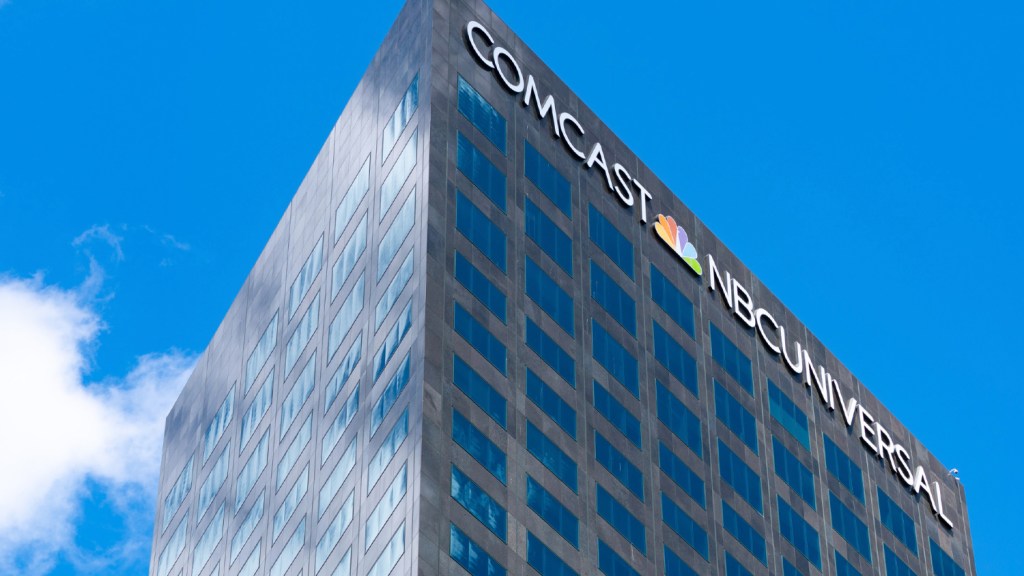Comcast Surpasses Q1 Expectations Despite Advertising and Broadband Headwinds
Comcast Corp. (CMCSA) outperformed Wall Street’s first-quarter earnings forecasts, reporting $30.06 billion in revenue against an expected $29.75 billion, but faces mounting challenges in its domestic advertising and broadband divisions. The Philadelphia-based media giant announced its Q1 2024 results on April 25, revealing a 1.2% year-over-year revenue increase alongside concerning declines in key business segments that signal shifting industry dynamics.
Strong Financial Performance Masks Underlying Vulnerabilities
The telecommunications conglomerate posted adjusted earnings of $1.04 per share, beating analyst projections by 4 cents, while net income rose to $3.86 billion from $3.83 billion a year earlier. This financial resilience stems primarily from:
- Peacock streaming service adding 3 million subscribers (now totaling 34 million)
- Theme park revenue jumping 29% to $2.4 billion
- Business services division growing 3.4% annually
However, beneath these bright spots, Comcast lost 65,000 broadband subscribers in Q1 – its seventh consecutive quarter of declines. Domestic advertising revenue also fell 3.6%, reflecting broader challenges in linear TV and digital ad markets. “Comcast is walking a tightrope,” said media analyst Rebecca Arroyo of Bernstein Research. “Their traditional cash cows are shrinking while streaming and parks can’t fully offset those losses yet.”
Advertising Downturn Reflects Industry-Wide Shifts
The 3.6% advertising decline ($2.78 billion vs. $2.88 billion in Q1 2023) stems from multiple factors:
- Linear TV viewership erosion (down 12% year-over-year across the industry)
- Political ad spending lull before election season
- Increased competition from digital platforms like Google and Meta
NBCUniversal’s advertising revenue specifically dropped 3.2%, with broadcast TV down 8% and cable networks falling 3%. “The advertising market is undergoing its most dramatic transformation since the rise of television,” noted media economist David Chen. “Traditional bundling approaches are becoming less effective as audience fragmentation accelerates.”
Broadband Challenges Intensify Amid Market Saturation
Comcast’s broadband losses (-65K subs) were less severe than Q4 2023’s (-34K) but mark a worrying trend. The company now serves 32.2 million broadband customers, down from 32.3 million last quarter. Three primary factors drive this decline:
- Market saturation: 90% of U.S. households already have broadband
- Increased competition: Fiber expansion from AT&T, Verizon, and municipal providers
- Wireless substitution: 5G home internet gaining traction (T-Mobile added 405K home internet subs in Q1)
CFO Jason Armstrong acknowledged these pressures during the earnings call: “We’re seeing more competitive intensity in broadband, particularly from fixed wireless offerings. Our focus remains on delivering superior speeds and reliability while expanding our next-generation networks.”
Strategic Investments Aim to Future-Proof Business
Comcast is deploying several strategies to address these challenges:
- Network upgrades: Investing $15 billion annually in infrastructure, including DOCSIS 4.0 rollout
- Streaming expansion: Peacock will feature exclusive NFL playoff game in 2025
- International growth: Sky UK saw 5% revenue increase to $4.8 billion
- Parks innovation: Epic Universe theme park opening 2025 in Orlando
These moves come as the company reduces costs, cutting 2,700 jobs (about 0.8% of workforce) in early 2024. “Comcast is playing both offense and defense simultaneously,” observed telecom analyst Mark Henderson. “They’re pruning less profitable operations while making big bets on future growth areas.”
Industry Analysts Offer Mixed Outlook
Wall Street remains divided on Comcast’s trajectory. Morgan Stanley maintains an “Overweight” rating, citing strong free cash flow ($4.1 billion in Q1) and diversified revenue streams. Conversely, Wells Fargo downgraded CMCSA to “Equal Weight,” noting broadband competition will likely intensify through 2024.
The company’s stock reacted modestly to the earnings news, rising 1.3% in after-hours trading. Over the past year, shares have gained 8.5%, underperforming the S&P 500’s 22% rise. “Investors want to see Comcast stabilize its broadband business while proving Peacock can become profitable,” said equity research director Lisa Wong. “That dual mandate won’t be easy to achieve.”
What’s Next for Comcast in 2024?
Management maintained full-year guidance, projecting 3-5% adjusted EBITDA growth. Key upcoming developments include:
- Summer Olympics coverage across NBCUniversal platforms
- Expanded Xfinity Mobile offerings (now 6.9 million lines)
- Peacock price increase ($2/month hike coming in July)
As cord-cutting accelerates (Comcast lost 487K video subs in Q1) and broadband growth plateaus, the company must successfully pivot toward next-generation connectivity and streaming. “The media landscape is changing faster than ever,” concluded CEO Brian Roberts. “We’re positioning Comcast to lead through technological evolution rather than resist it.”
For investors and industry observers, the coming quarters will reveal whether Comcast’s strategic bets can overcome its structural challenges in an increasingly competitive digital ecosystem. Follow our business section for ongoing analysis of Comcast’s transformation efforts and the evolving telecommunications landscape.
See more Business Focus Insider Team

